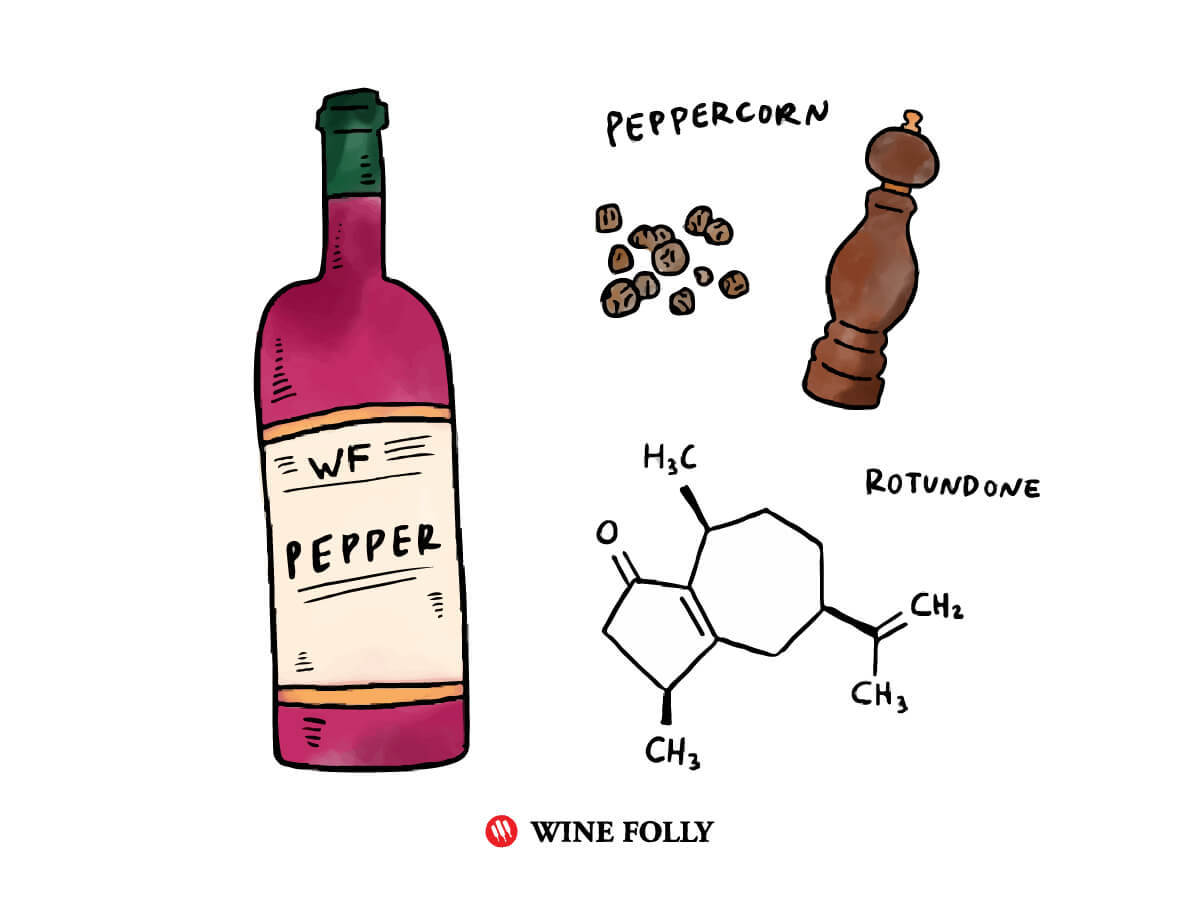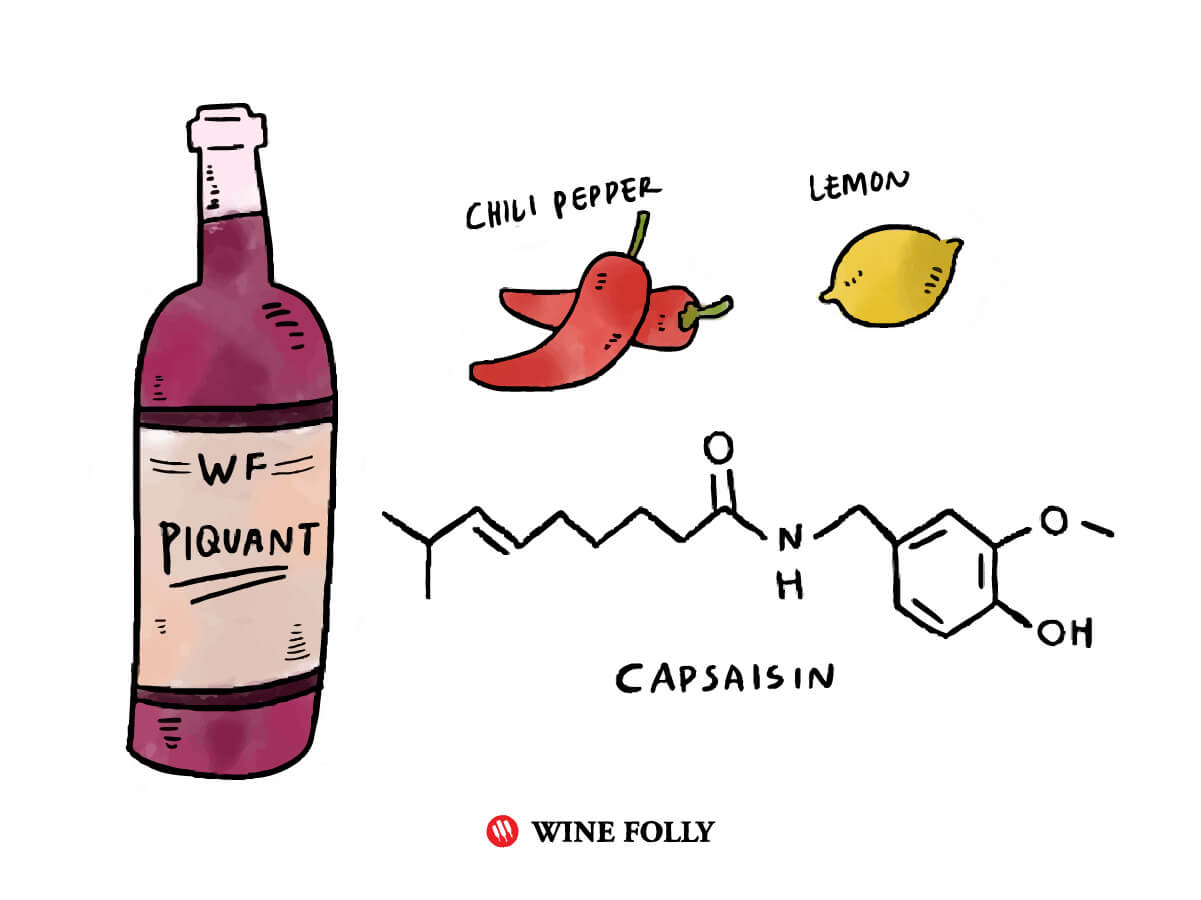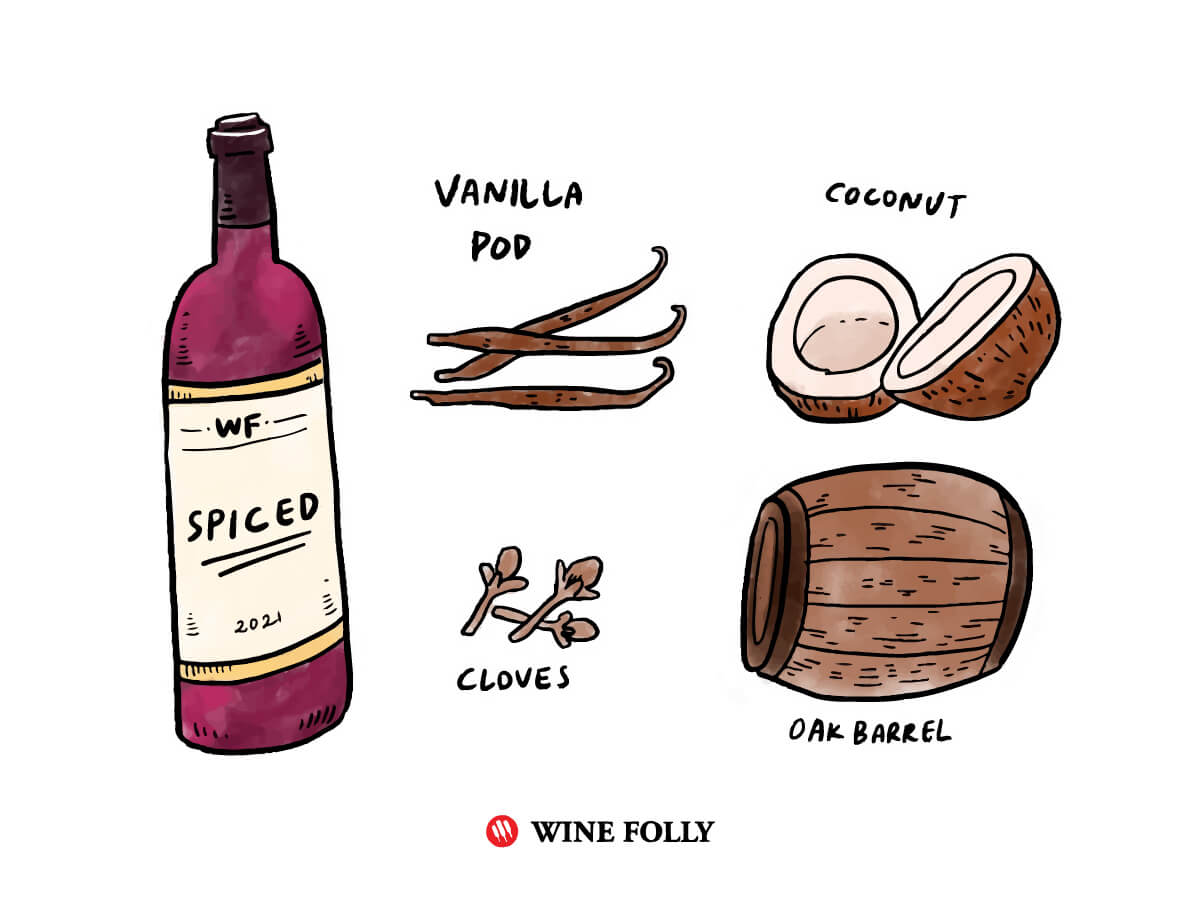A sip of red wine can suddenly set the palate sizzling – that spicy red wine has a whole world of delicious, zesty compounds that light up your palate and senses.
These flavors aren’t an accident; they come from fascinating natural compounds in the grapes, the barrels, and even the winemaking process itself.
This quick guide explores what gives some wines their unmistakable spice, why certain bottles feel lively or piquant on the tongue, and where these styles can be found around the world.

Quick Guide to Spicy Red Wine
There are a number of reasons why a wine might taste spicy or piquant.
Do you pick up a peppery aroma in your Syrah? Perhaps there’s a warming or piquant sensation on your tongue when drinking Chianti, or maybe you think of baking spices such as vanilla, nutmeg, and clove, as we might find in California Zinfandel.
Let’s dive into the aspects of what makes a wine taste and feel spicy.

Pepperiness
Some wines smell of freshly crushed black or white pepper, which is really great when pairing it with a pepper steak.
Syrah grapes deliver a high level of pepperiness because their skins contain the same compound found in black peppercorns. The naturally occurring compound is called Rotundone.
One in five people can’t smell rotundone at all, which explains why Syrah doesn’t taste peppery to everyone.

Piquant
Have you ever felt a warming or burning sensation when sipping a wine, kind of like when eating a piquant pepper?
Chianti Classico from Italy delivers this warming sensation. Due to its high level of acidity, you can feel that piquant sensation. Pairing salty cheese or well-seasoned red meat softens Chianti’s high acidity.
You might also find that piquant sensation with Amarone, a wine with high levels of alcohol, around 15-16%. This full-bodied wine pairs best with richly flavored dishes like braised meats.
Why do these wines feel spicy?
Certain compounds activate the tongue’s touch receptors rather than flavor receptors – capsaicin, found in spicy peppers, does this, but so do alcohol and acid.
They can make a wine feel more piquant. TRPV1 receptors tell us when things are hot – normally activated at 107°F (42°C); however, things that are noxious also activate them, like capsaicin, alcohol, and high-acid foods or beverages.

Spiced
Some wines smell like a spice cupboard, with vanilla, cloves, and baking spices. If that’s the type of spicy red wine you’re looking for, then give Zinfandel from Lodi, California, a try or a Pinotage from South Africa. These wines are often aged in oak barrels for over a year, which adds baking spice flavor to the wine.
Oak barrels release specific compounds during aging, creating the aromas we associate with spice, vanilla, or toast.
American oak often contributes coconut aromas from oak lactones, while both French and American oak add vanilla from vanillin. Eugenol and guaiacol bring spicy, clove-like, and toasty notes.
Sometimes Brettanomyces yeast grows in oak barrels, adding an extra layer of clove-like spice. Many producers consider Brettanomyces a fault, while others embrace the complexity it adds.
Enjoy Your Spicy Wine
There are many ways in which we might experience a red wine to be spicy, whether it is peppery, piquant, or spiced. Depending on what you like, you have a wide range of wine styles to choose from.
If you like spice and are looking for a white wine, try Gewürztraminer, particularly from Alsace, which has 4-Vinylguaiacol in it, a compound that gives the wine a spicy edge. Grüner Veltliner from Austria can also be spicy, as it, like Syrah, has Rotundone in its skin.
Armed with this spicy wine knowledge, jump out there and learn by drinking!